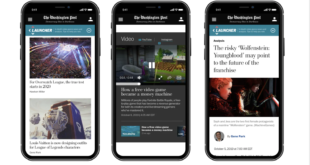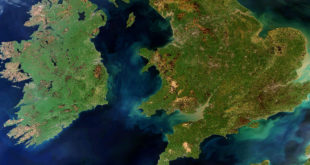It’s no good shouting at an empty room. Publishers need to know where their audience is and how to reach them, and as the demographic of gamers broadens, this is becoming much more challenging.
Rewind five, ten years and magazines held more sway over the gaming masses. Each edition was a flame attracting consumers’ moth-like fascination with video games.
But the evolution of online games coverage, emergence of digital magazines and widespread penetration of smartphones and tablets has changed the market. Avid gamers receive the news up to the minute, not when a monthly issue arrives.
So how do you go about tracking the size of that audience if not with the traditional twice-yearly circulation stats?
It used to be relatively easy – either a print publication’s ABC figure or website’s ABCe/unique users,” says Stu Taylor, founder of PR agency Dead Good Media.
With most consumers and press now getting their news through social media channels like Twitter and Facebook, the playing field has changed completely.”
With most consumers and press now getting their
news through social media channels like Twitterand
Facebook, the playing field has changed completely.”
Dead Good Media founderStu Taylor
There are plenty of alternatives to circulation figures out there: Twitter followers, Facebook Likes, page views, unique vistors – the list goes on.
But in such a diverse market, none of these have the weight that ABCs once had. Instead, companies use a combination of stats – Future, for example, now calculates the ‘overall reach’ of its brands across print, digital, online and social media.
As an agency we’re used to using a number of different metrics. What we use for a specific campaign or project is down to the preference of the client,” says Lunch PR’s junior account director?Mark Robins.
In some cases that could be a straight unique users or ABC figure or, more practically, an ROI calculation for a final report.”
Codemasters’ head of communications Rich Eddy agrees: ”It’s important to put media coverage in context alongside wider communications on a weekly basis. We track both engagement and interaction on Twitter, Facebook and YouTube against a competitive set and our own past performance.
Put all that in further context by tracking pre-orders and you’re some way to understanding the real value of paid, owned and earned media.”
However, gauging how effective media coverage is with a social media audience requires more than just simple numbers.
Facebook shares and Twitter hashtag trends can help articles spread far beyond their usual reach. It’s not about how many people see this content, it’s about what they say afterwards.
As long as you’re involved in a conversation, you could consider this as effective,” says Premier PR account manager Gareth Williams.
You could say reaching 1.3m readers via Twitter through celebrity endorsement and reader interaction could be effective, but the quality of the conversation is also important.”
Of course, one advantage of today’s media landscape is the ability to track the influence of individual articles and other content, rather just a whole magazine.
For a hands-on impressions feature of a new game, we can look at a website’s unique users,” Taylor says. If it’s a new video asset, we’d place more emphasis on social media shares and YouTube views.
Most PR systems are based around comparing what any piece of coverage would have cost you if you’d paid for that page. The immediate problem with that is that consumers aren’t stupid. They tend to regard editorial content as being more valid, or having more worth, than a paid for advertorial feature.
Even a piece of editorial that paints a game in a mediocre light would still have more influence than an advert.”
Most PR systems are based around comparing what
any piece of coverage would have cost you if you’d
paid for that page. The immediate problem with that
is that consumers aren’t stupid. They tend to regard
editorial content as being more valid, or having more
worth, than a paid for advertorial feature."
Dead Good Media founderStu Taylor
Some media outlets have developed ways to let publishers and other games firms get a more comprehensive view of who is consuming their content and how they are doing so.
Codemasters’ Eddy pointed to GameSpot, for example, which tracks everything its users do and offers that information to clients via its GameSpot Trax service. No doubt other media firms will invest in similar systems in future.
Ultimately, the biggest metric that both publishers and media firms want to build on isn’t even quantifiable: hype.
There are now so many ways to gauge how many consumers are reading news and reviews, watching previews and trailers, and discussing games via social media, but it’s all for naught if no one is discussing your games.
Successful media coverage generates a buzz,” says Focus Multimedia’s PC brand manager Alan Wild. There’s no greater success in media coverage than positive word of mouth, well, except for the actual sales it drives.”
Williams adds: The media landscape is constantly changing, with new opportunities and new forms of media emerging all the time.
Effective coverage isn’t always about numbers and top placements. While we value traditional specialist coverage, we challenge ourselves to break out into the mainstream: national and regional broadcast, lifestyle print and online.
We’ve always communicated with consumers, but we’re beginning to have more of a conversation with through social media. We also like to get journalists talking amongst themselves, and to consumers through stand-out content – it all leads to effective media coverage.”

 MCV/DEVELOP News, events, research and jobs from the games industry
MCV/DEVELOP News, events, research and jobs from the games industry



